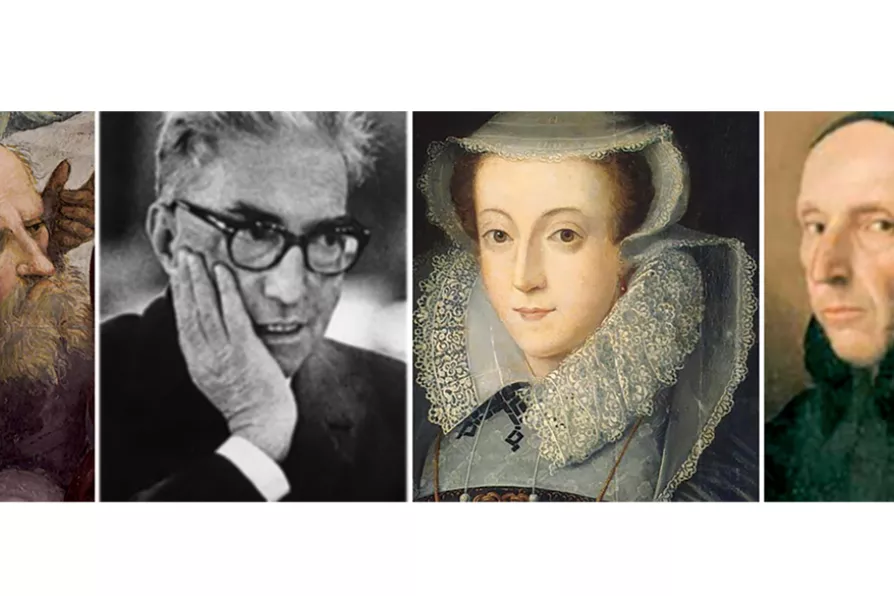LEO BOIX, ANDY HEDGECOCK and MARIA DUARTE review Dreamers, It Was Just An Accident, Folktales, and Eternity
Meditations on captivity and liberation
BEN LUNN remembers the Italian composer Luigi Dallapiccola, whose embrace of serialism and the 12-tone scale coincided with his rejection with fascism

 HANDLING HORROR: (L to R) Boethius, Luigi Dallapiccola, Mary Stuart and Girolamo Savonarola
[Raphael (School of Athens c1510) - Public domain - Public domain - Moretto da Brescia c 1524/CC]
HANDLING HORROR: (L to R) Boethius, Luigi Dallapiccola, Mary Stuart and Girolamo Savonarola
[Raphael (School of Athens c1510) - Public domain - Public domain - Moretto da Brescia c 1524/CC]
2024 is a year of many significant anniversaries and milestones.
The third of February marked the 120th anniversary of the Italian composer Luigi Dallapiccola who was no stranger to political turmoil and deserves serious reflection in terms of how artists can respond to national and international events.
Born in Pisino d’Istra, Dallapiccola grew up in political uncertainty. His father, who was a headmaster of the local school, had been deemed politically suspect and his whole family had been imprisoned at Graz in Styria for about two years. After this turmoil, Dallapiccola went onto study composition and was notably influenced by the musical discoveries of Schoenberg.
Similar stories

SIMON DUFF reviews a new composition by German composer and pianist Florian Weber that blurs the line between where improvisation ends and composition begins

JOHN NEWSHAM draws attention to the uncompromising path of US singer/songwriter CONOR OBERST

In advance of their performances in London BEN LUNN speaks to PETER PAUL KAINRATH, artistic director of Klangforum Wien

The abundance of quality is heartening and bodes well for the future










